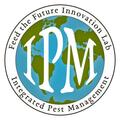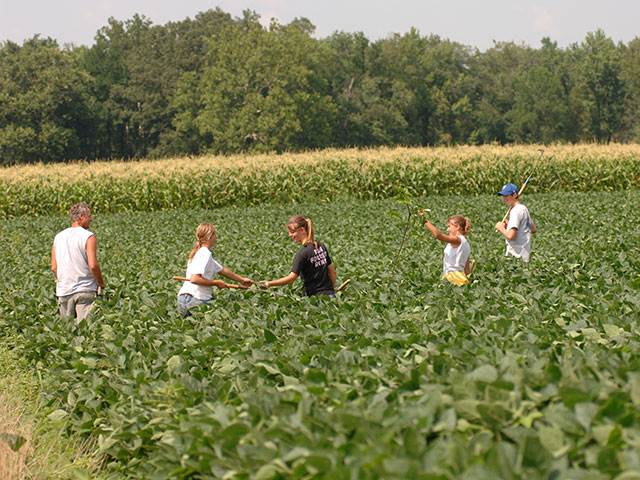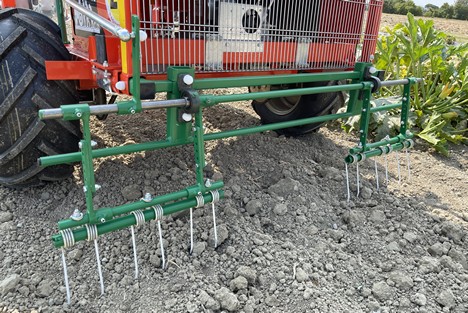These robots provide a high-tech solution to an age-old farming problem: how to get rid of weeds
Harvest Public Media | By Celia Hack
Published April 8, 2024 at 4:00 AM CDT
LISTEN • 3:20

Greenfield Robotics, a Kansas-based company, is hoping to move agriculture away from herbicides. They’ve developed robots to take on a labor-intensive process — cutting weeds down.
Three yellow, bug-like creatures crawl in perfectly straight lines across the dead grass of a flat, brown February field in Cheney, Kansas.
These are the namesake of GreenField Robotics. Two lights peer out from each side of the boxy machines, almost appearing like eyes. Blades whir at their base, about a half an inch from the ground – the perfect height to chop weeds, though there’s nothing to cut down on a frigid winter day.
They stick out in an otherwise rural landscape – and GreenField CEO Clint Brauer said he frequently hears from curious passersby.
“All the time,” Brauer said. “I’m always surprised, though, how little people notice.”
Brauer founded the company in 2018. The start-up has now grown large enough to attract investment from Chipotle’s $100 million venture capital fund and to secure partnerships with dog food and baking mix brands.
Brauer grew up on a family farm in Haven, Kansas, but moved to California after high school to work in the tech industry. In 2010, he returned home after his dad was diagnosed with Parkinson’s disease. He attributes the use of herbicides to his dad’s diagnosis.
“The more I learned about farm chemicals and stuff … the more I thought there’s a decent chance that this came from that,” Brauer said.

The move sucked Brauer back into the world of agriculture, where he started seeking ways to eliminate herbicides. He tried farming organically, but it was too expensive to be accessible to many buyers.
Another option was no till farming, where farmers avoid turning over the dirt to reduce erosion and improve soil health. But it’s a method that leans on herbicides.
And in 2015, Brauer was starting to notice the weeds in his fields were becoming resistant to chemicals anyway.
“There was no good way to get rid of those weeds, even though we had sprayed many times,” Brauer said.
“So, what do we do? And so that was the beginning of this idea of – what if we just cut those weeds?”
Cutting weeds by hand wasn’t exactly a 21st-century answer. So Brauer thought: What about robots? He reached out to software and machine-vision experts and started prototyping robots.
By 2021, the company had manufactured a two-and-a-half foot-tall working robot. And it pulled together different technologies, like drones, to create extremely precise maps of crop fields. The robots follow the maps, so that they’re unlikely to accidentally chop down a crop instead of a weed.
“They plant the crop, we count about 10 days, normally, the crops emerge, and we fly over it with a drone,” Brauer said. “ … That’s where AI – we have machine vision that automatically recognizes everything that’s going on in that field.”
Thirty to 40 days later, Brauer sends out the robots.

In 2022, the company partnered with MKC, a major agricultural cooperative, to reach farmers who might use the product. In 2023, GreenField Robotics worked with 25 to 30 Kansas farmers, Brauer said. The company currently has a fleet of 20 robots and 15 employees
This summer, Brauer said the company is planning to work the weed-cutting robots on over 20,000 acres.
John Niemann is a farmer in Reno County. He tested GreenField Robotics for the first time last spring on 80 acres of a sorghum field, leaving 10 acres untouched to compare results. He had treated the entire crop with herbicides earlier in the season.
“We saw higher yields where we used the robots, versus the 10 acres that we did not,” Niemann said.
That’s because the weeds that didn’t get chopped down in the 10 acres competed with the crop for moisture, hampering the yield.
“The robots are part of a toolbox, is how I would look at them,” Niemann said. “There is no magic bullet in farming practices. You need to have a lot of tools in your toolbox.”
Niemann says the robots are a useful tool to reduce reliance on chemicals. Plus, he said the cost was comparable to herbicides.
Brauer said the economics is always his first pitch to farmers, and the robots are compelling because they damage less of the crop than chemicals do.
The company is also adapting the robots for other uses, like planting cover crops and soil testing.
“We are on a mission,” Brauer said. “This is not about enrichment. This is – we’re building something that can’t be undone. And so we’re going to eliminate these chemicals.”
This story was first aired and produced by KMUW. It’s being distributed by Harvest Public Media, a collaboration of public media newsrooms in the Midwest. It reports on food systems, agriculture and rural issues.
Tags


























